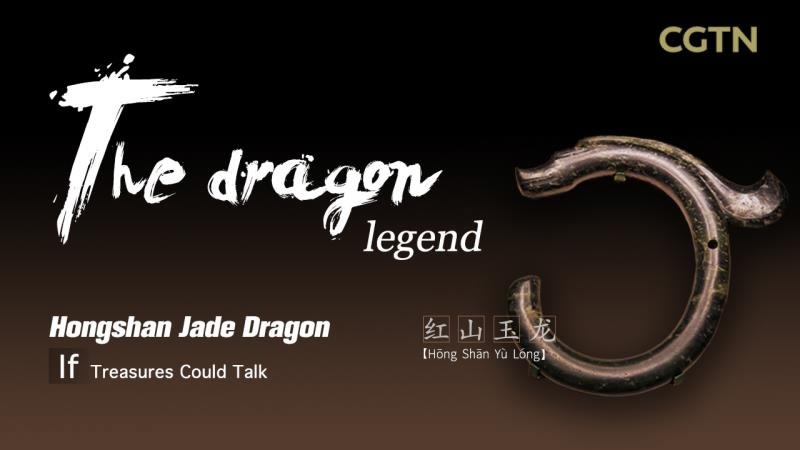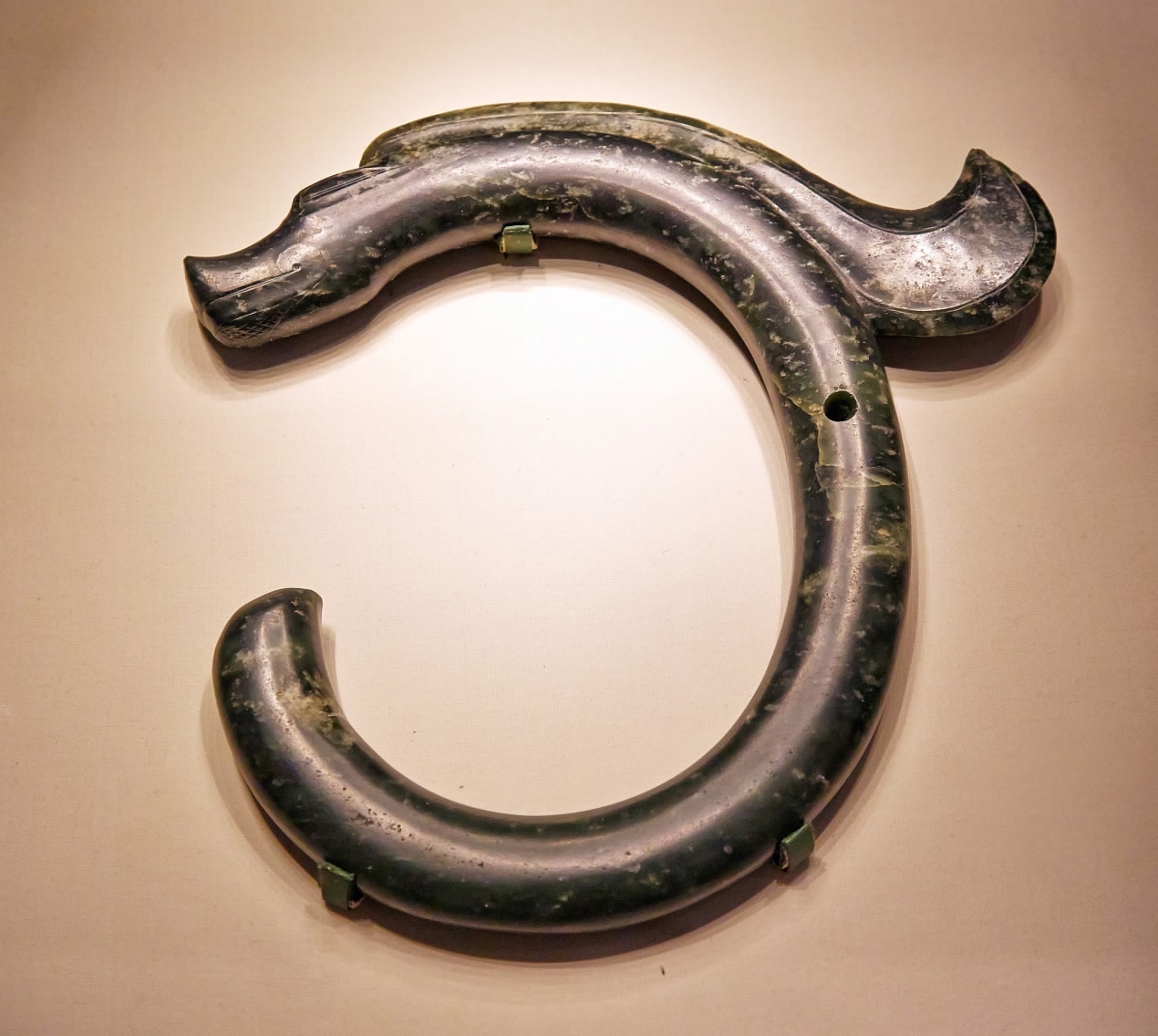
Culture
19:35, 23-Feb-2018
If Treasures Could Talk: What would Hongshan Jade Dragon say?
By Special Feature and Documentary Programming & Culture Express

The fifth episode of CGTN's special series, "If Treasures Could Talk" features a jade dragon, which has been around for thousands of years.
This mysterious work of jade art was discovered in Ongniud Qi in Inner Mongolia. The nose is upturned and the eyes slightly convex. The mane gives the impression of a creature in flight. The design is simple and elegant; the jade, fine and smooth.
It’s as if it’s still soaring on a wind that blew 5,000 years ago.
A similar jade piece was discovered in the village of Tala in Sanxing.
Known as the “First Dragon of China,” it is regarded as the archetypal ancient depiction of a dragon.
Both jade dragons were discovered near the city of Chifeng. It was here, in the Liaohe River Basin, that Hongshan Culture originated around 5,000 years ago.

Hongshan Jade Dragon is displayed at the National Museum of China on May 16, 2011. /VCG Photo
Hongshan Jade Dragon is displayed at the National Museum of China on May 16, 2011. /VCG Photo
It was a time of great intimacy between people and their natural environment, when life and spirit flowed freely between humans and nature.
The jade works of Hongshan Culture are plain, unadorned, and bulky.
The image of the jade dragon-boar has become a symbol of Hongshan Culture.
Yet, the boar and dragon-shaped pottery of Hongshan is predated by that of Xinglongwa. And images of dragons and tigers made from shells have been found in graves at Yangshao.
These cultures flourished in areas geographically far apart. Yet all three present a common image of the dragon, as a combination of parts of several different creatures.
All things share a common origin. This is true of China’s ethnic groups.

Picture of Hongshan Jade Dragon taken at National Museum of China on July 8, 2014. /VCG Photo
Picture of Hongshan Jade Dragon taken at National Museum of China on July 8, 2014. /VCG Photo
The dragon is the symbol of the Chinese nation: Every aspect of life of every Chinese person is like a scale on the dragon’s body. Together, these scales shape Chinese civilization.
So, how did the Chinese dragon come into being? Various jade pieces serve as footprints, which we can follow back through time.
The changes point to the aesthetic sensibilities of different eras.
The curled jade rings resembling a baby in the womb, appear to be the earliest form of a dragon.
It’s as if they are depicting the conception of life and of civilization.
Held up to the light, just as our ancestors must have done 5,000 years ago, we can only marvel at the clarity and translucence.
The curved spine arching towards the sky, suggests an imminent leap and a flight through time.

SITEMAP
Copyright © 2018 CGTN. Beijing ICP prepared NO.16065310-3
Copyright © 2018 CGTN. Beijing ICP prepared NO.16065310-3